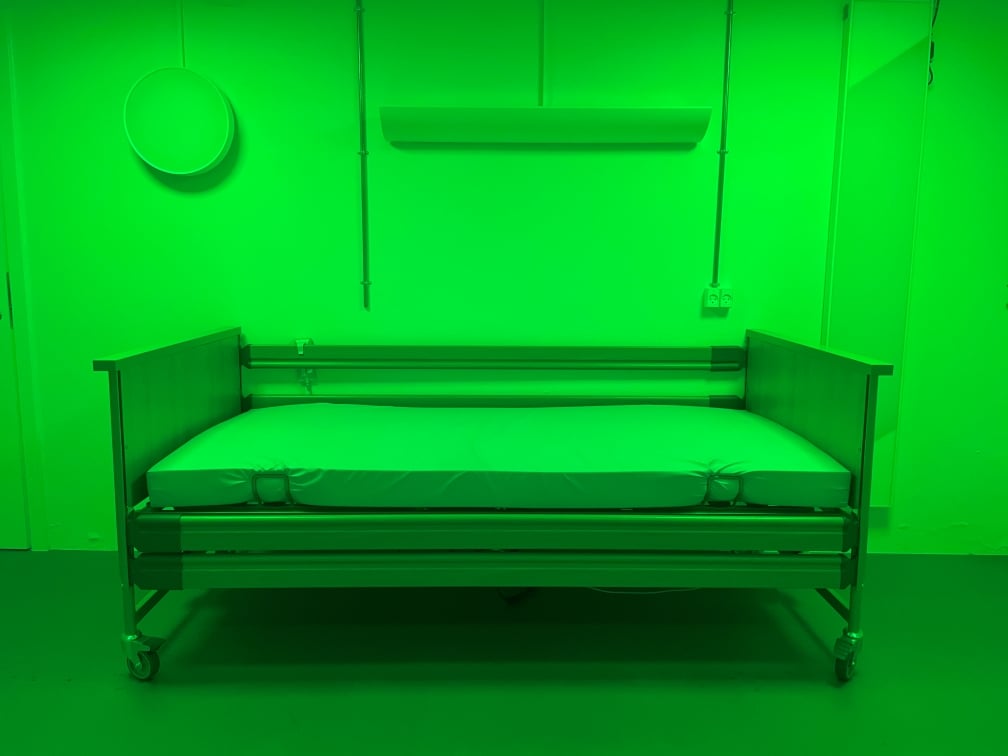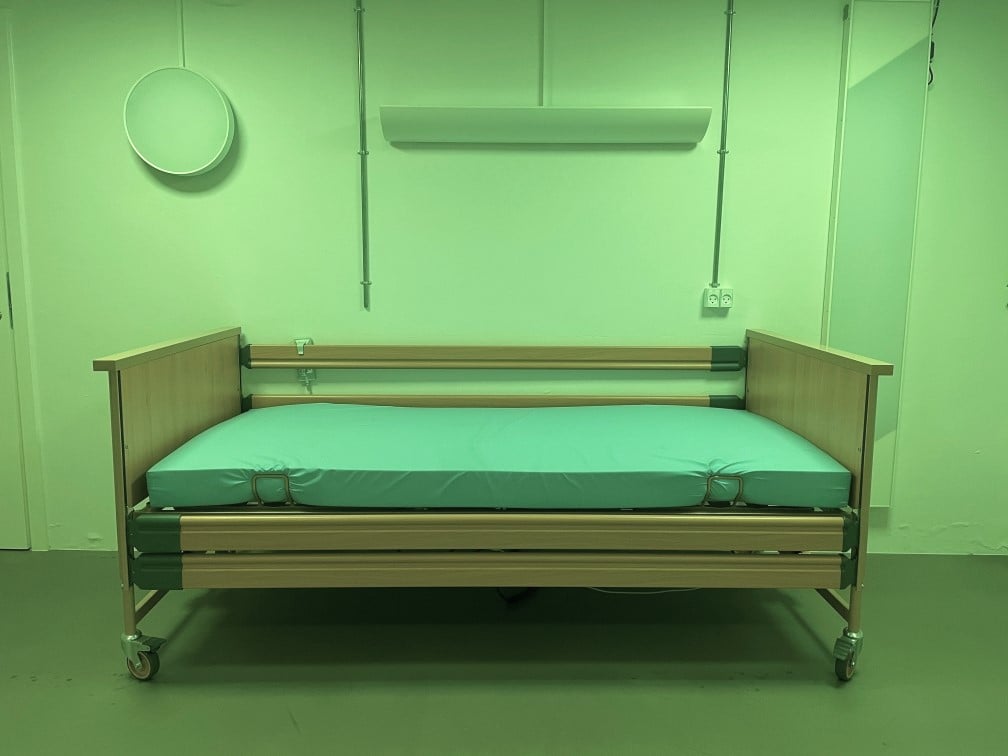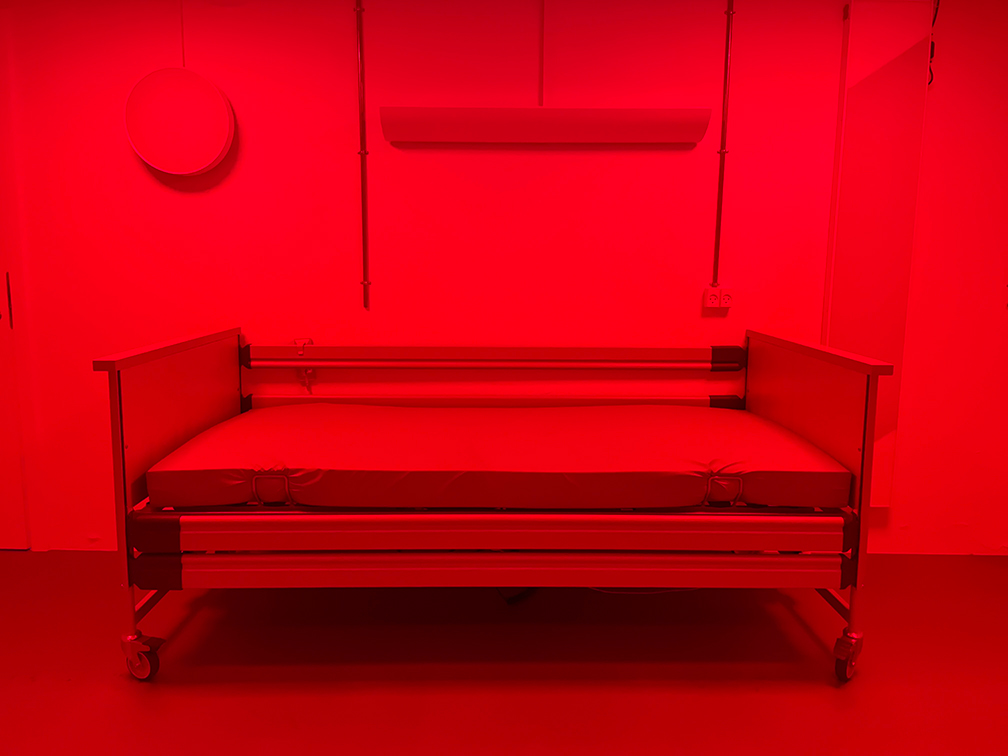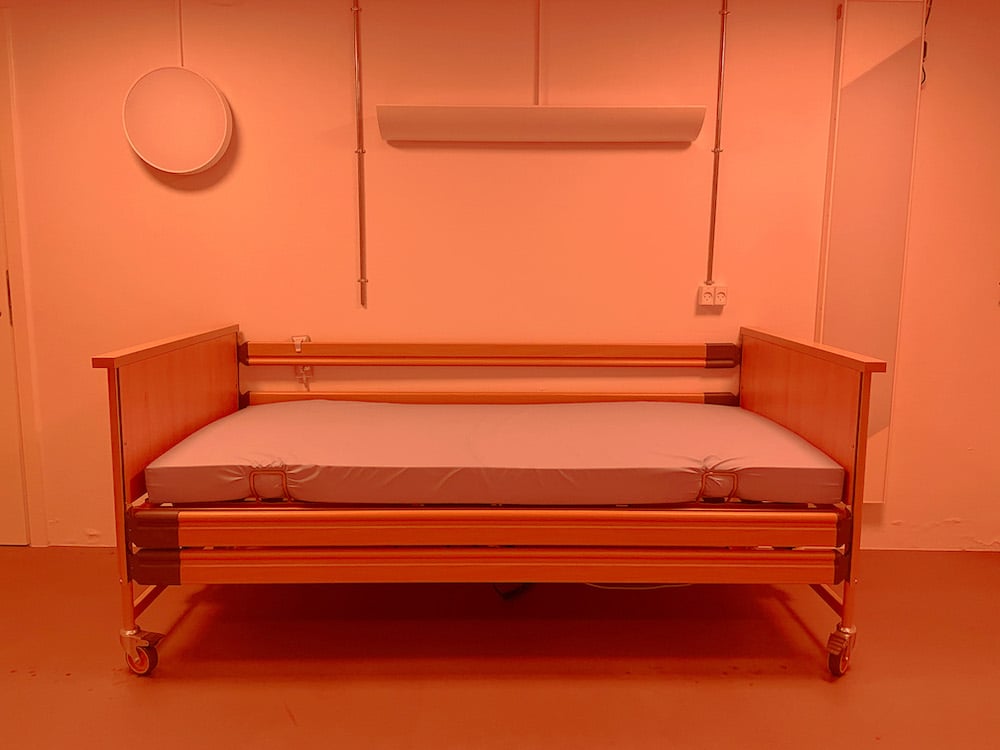Chroma Zona ergonomic lighting is not simply red or green, although it may initially appear that way. Ergonomic lighting consists of a combination of different colors that together create a pleasant toned white light, which is ideal for operating theatres and other hospital spaces where work is done on screens. But what makes it ergonomic? And why is this solution preferable to monochromatic lighting? Our Sales and Relations Manager, Anne Mette, explains it all.
To comprehend the concept of ergonomic lighting, it is essential to understand what ergonomics is all about. In simple terms, Ergonomics focuses on preventing work-related injuries by incorporating theories, knowledge, and experiences about human beings. The term 'ergonomics' is often used to describe something that is physically comfortable for the body, such as an ergonomic chair, an ergonomic keyboard - or in our case - ergonomic lighting. But why is there a need for ergonomic lighting in the first place?
Operating in Dim Lighting
The concept was developed for the healthcare sector to improve working conditions in situations where screens are used, such as in operating theatres. In the past, most surgeries were performed as open surgery, which required bright lighting. However, as keyhole and robotic surgeries have become more common, more screens have been introduced into operating theatres, leading to different lighting needs. The problem is that many operating theatres still have intense, bright white lighting, and it is not uncommon for surgeons performing keyhole or robotic surgeries to turn off some or all of the lights and operate in dimly lit environments. They do this to avoid glare, reflections, and disturbances in the screen image, as these can negatively affect the quality and efficiency of their work.
However, it is also not ideal for the staff to work in darkness, as the screens in the operating theatre are powerful with sharp colors and extra clarity. A clear and powerful screen is essential for the surgeon to perform their work optimally, but it is also straining for the eyes to be in dark surroundings with bright screens, as the contrast between the darkness and the light is significant. Because the surgeon and the rest of the staff work very concentrated and focused on the screen, they also blink less than normal. This can result in their eyes becoming dry, leading to eye irritation. Additionally, tension headaches and accompanying fatigue can often occur in the staff because they strain their eyes over a prolonged period. It is precisely this issue of either overly illuminated or dark spaces and intensely bright screens that gave rise to the idea of ergonomic lighting back in the 2000s.
The appropriate use of color ensures comfort
Just like other ergonomic furniture and objects, ergonomic lighting is designed with the human in mind, taking into consideration visual, physical, and psychological factors. The aim is to create lighting that is not only comfortable but also beneficial for work.
Chroma Zona ergonomic lighting has been developed with green and red tones of white light, to ensure that the eyes of the staff can see with minimal strain. This means that ergonomic lighting is not just red or green, but includes several different colors in addition to these. Because Chroma Zona ergonomic lighting encompasses a large part of the color spectrum, it eventually appears as a white light. Therefore, ergonomic lighting is not a monochromatic color that is only red or green, which makes the light more relaxing to work in and provides better color rendering for the surgeon and the rest of the staff in the operating theatre.
Stage light in the Operating Theatre
In contrast to ergonomic lighting, monochromatic lighting consists of only one color. Monochromatic lighting is saturated and intense in color, making it best suited for decorative purposes, events, art, and culture. However, there are examples of monochromatic lighting being used in other areas, such as operating theatres, in an attempt to create the same ergonomic effect as actual ergonomic lighting. The installation of monochromatic lighting in operating theatres likely occurs because people believe that ergonomic lighting is red and green, and therefore any type of red and green light must be ergonomic. But this is not correct. As mentioned, ergonomic lighting consists not only of one color but a combination of several colors. Therefore you can explain the difference between ergonomic lighting and monochromatic lighting as follows: ergonomic lighting is a multi-colored light specially developed to support human needs and create better working conditions, while monochromatic lighting consists of saturated colors designed to be decorative and atmospheric.
Visualization
Would you like to witness the difference with your own eyes? Compare the images below by simply dragging the arrows. Please note that depending on your screen resolution, it may be challenging to properly distinguish the colors. However, you are always welcome to contact us and visit our showroom to experience the true effect of Chroma Zona ergonomic lighting.





